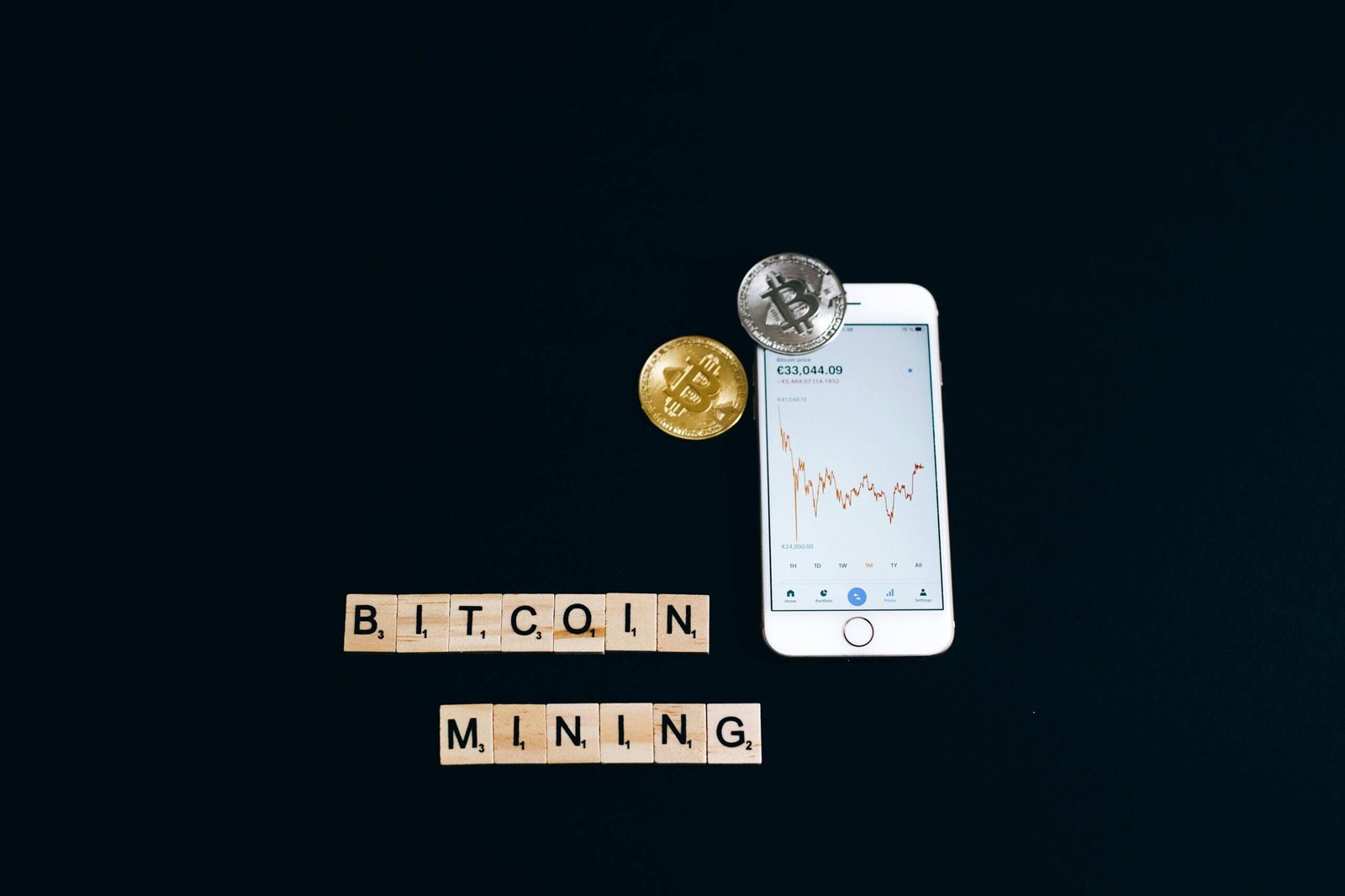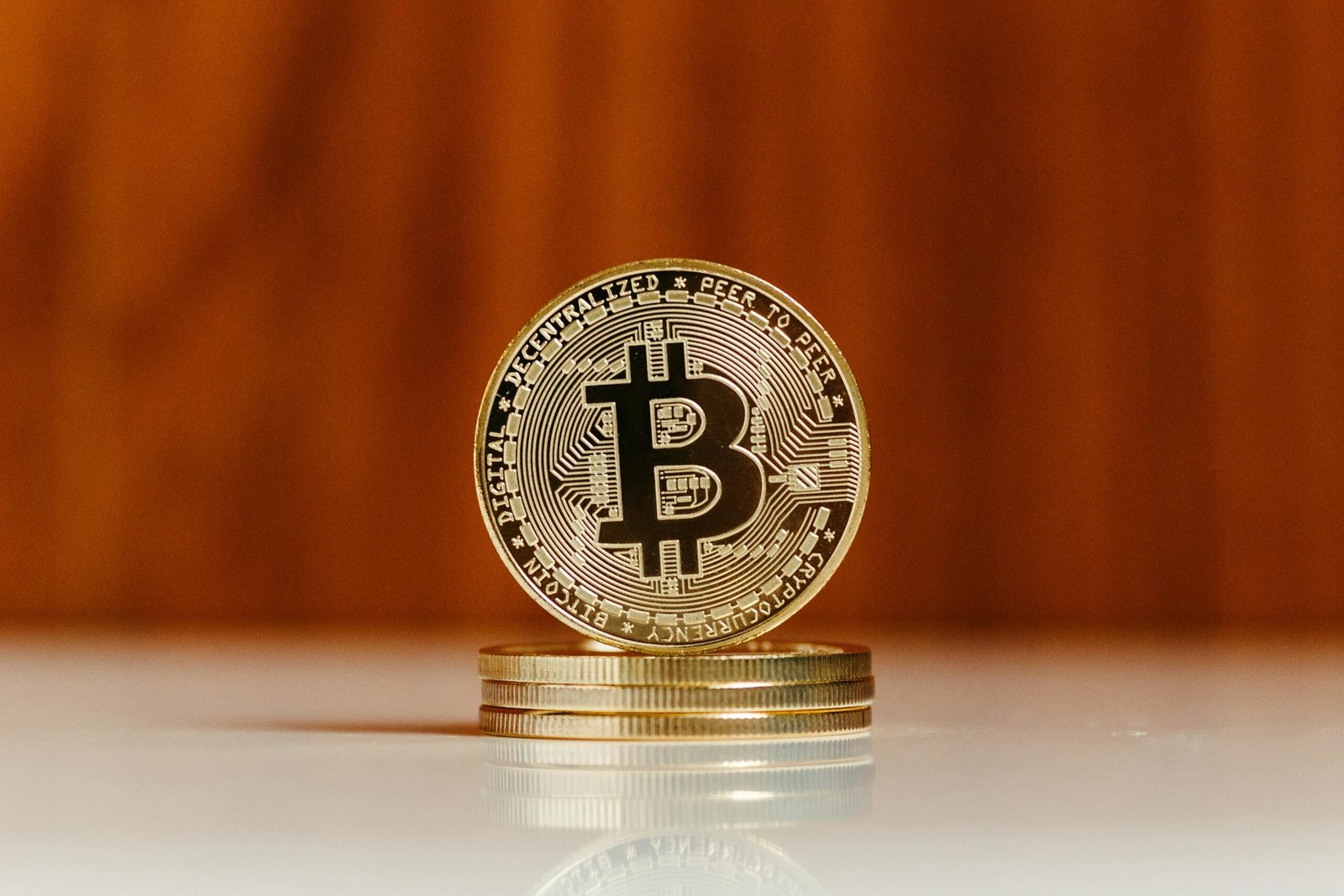So, you’ve heard the buzz about cryptocurrency mining. Maybe a friend made a few bucks, or you’re fascinated by blockchain technology and want a hands-on way to participate. The idea of your computer generating digital gold sounds alluring, right? But stepping into the world of crypto mining as a beginner can feel like navigating a maze filled with jargon, complex hardware, and wild promises. Before you max out your credit card on the shiniest machine, let’s get real.
Is Crypto Mining Still Worth It for Beginners in 2024?
Let’s address the elephant in the room upfront: mining Bitcoin or Ethereum solo with consumer hardware is largely unprofitable today. The days of casually mining Bitcoin on your gaming PC are long gone. The network difficulty for major coins like Bitcoin is astronomically high, dominated by massive industrial-scale operations with access to ultra-cheap electricity and specialized hardware (ASICs).
-
High Entry Costs: Powerful mining rigs aren’t cheap.
-
Sky-High Electricity Costs: Mining consumes significant power; your profit can vanish into your utility bill.
-
Network Difficulty: The more miners compete, the harder it gets to earn rewards.
-
Volatility: Cryptocurrency prices swing wildly, impacting potential profits.
-
Noise & Heat: Mining gear generates substantial noise and heat, often requiring dedicated cooling or space.
Does this mean beginners shouldn’t mine? Not necessarily! It means you need realistic expectations, careful research, and the right hardware approach. Mining smaller, alternative cryptocurrencies (altcoins) with less network difficulty or focusing on energy-efficient setups can still be viable entry points, especially if you view it as a hobby, a learning experience, or a way to accumulate coins you believe in long-term, rather than a guaranteed get-rich-quick scheme.
Choosing Your Weapon: Understanding Mining Hardware Types
Before diving into specific devices, understand the main types of hardware used:
-
ASIC Miners (Application-Specific Integrated Circuit):
-
What they are: Dedicated machines built only to mine specific cryptocurrencies using a specific algorithm (e.g., SHA-256 for Bitcoin).
-
Pros: Unmatched efficiency and hashrate for their target algorithm. Highest potential profitability for that specific coin.
-
Cons: Expensive upfront cost. Very loud and hot. Cannot be repurposed; become obsolete when newer models arrive or if the coin’s algorithm changes. Limited resale value after obsolescence. Power hogs.
-
Beginner Takeaway: Often overkill and impractical for home beginners due to cost, noise, and power. However, some lower-power ASICs exist.
-
-
GPU Miners (Graphics Processing Unit):
-
What they are: Using graphics cards (like those from NVIDIA or AMD) typically found in gaming PCs. Can mine various coins using different algorithms.
-
Pros: More versatile than ASICs – can mine many different coins. GPUs can be repurposed for gaming, rendering, or resold if mining doesn’t work out. Generally quieter and less power-hungry than high-end ASICs (though still significant). Scalable – start with one card, add more.
-
Cons: Lower efficiency/hashrate than ASICs for specific algorithms. Requires building/maintaining a rig (motherboard, PSU, risers, frame). Profitability highly dependent on coin choice and market conditions. GPU prices can fluctuate.
-
Beginner Takeaway: A popular, flexible entry point for beginners interested in altcoins. Offers a good balance between accessibility and potential.
-
-
CPU Miners (Central Processing Unit):
-
What they are: Using your computer’s main processor.
-
Pros: You already have one! Good for learning the absolute basics.
-
Cons: Extremely inefficient for almost all major cryptocurrencies. Profits are negligible or non-existent after electricity costs. Can overheat/stress your primary computer.
-
Beginner Takeaway: Not a viable path for earning. Useful only for educational tinkering on very specific, CPU-friendly coins (which are rare and usually not very profitable).
-
Best Crypto Mining Devices for Beginners (Starting Small & Smart)
Given the realities, here are some hardware options that offer a more accessible entry point for beginners, focusing on lower power, lower noise, manageable cost, and versatility:
1. GPU Mining Rig (The Versatile Workhorse)
-
Why it’s Beginner-Friendly: Flexibility is key. You can start small with one or two cards and mine a wide variety of profitable altcoins. If mining becomes unprofitable, you have valuable gaming hardware. Building the rig is a valuable learning experience.
-
Recommended Starter GPUs (Focusing on Efficiency – Hashrate per Watt):
-
NVIDIA RTX 3060 Ti (LHR or non-LHR): A previous-gen stalwart known for excellent efficiency, especially on algorithms like KawPow (Ravencoin) or Octopus (Conflux). Still widely available used at reasonable prices. Aim for models with good cooling.
-
NVIDIA RTX 4070: A newer, more efficient option. While pricier upfront, its superior performance-per-watt can lead to better long-term profitability, especially with lower electricity costs. Runs cooler and quieter than many older cards.
-
AMD Radeon RX 6700 XT: A strong AMD contender offering good efficiency on algorithms like Ethash (though Ethereum is PoS now, other coins use it) and others. Often found at competitive prices.
-
-
The Rig Basics (Beyond the GPU):
-
Motherboard: Needs enough PCIe slots (x1 is fine with risers) for your GPUs. Look for mining-specific boards or reliable used gaming boards.
-
CPU: Doesn’t need to be powerful. A basic, low-power Celeron/Pentium or Ryzen 3 is sufficient.
-
RAM: 4GB-8GB is plenty.
-
PSU (Power Supply Unit): CRITICAL. Get a reputable brand (Corsair, EVGA, Seasonic) with 80+ Gold efficiency or better. Calculate your total system wattage (GPUs are the main draw) and add 20-30% headroom. Modular PSUs help with cable management. Never skimp on the PSU!
-
Risers: Connect GPUs to motherboard PCIe slots. Get quality, known-good risers (Version 006C or 009S are common).
-
Frame: Open-air mining frame for optimal cooling. Can be bought or DIY’d cheaply.
-
Storage: Small SSD (120GB+) for the operating system (HiveOS is popular for mining).
-
-
Setup: Involves assembling components, installing a mining OS (like HiveOS, RaveOS, or simple Windows), configuring mining software (T-Rex, TeamRedMiner, GMiner etc.), and connecting to a mining pool. Requires patience and following guides.
-
Noise/Heat: Manageable with 1-3 cards in a well-ventilated room, but increases with more GPUs. Expect fan noise.
2. Goldshell Mini / Box Series ASICs (The Plug-and-Play Option)
-
Why it’s Beginner-Friendly: Goldshell specializes in lower-power, quieter ASICs designed for home use. They are truly plug-and-play: connect power, ethernet, access the web interface, point to a pool, and start mining. Minimal setup hassle. Much quieter than industrial ASICs.
-
Examples:
-
Goldshell KD Box / KD Lite: Mines Kadena (KDA) using the Blake2S algorithm. Very low power (~150-205W), super quiet (~35dB), and relatively affordable entry point for an ASIC.
-
Goldshell HS Box / HS Lite: Mines Handshake (HNS). Similar low power/noise profile to KD series.
-
Goldshell SC Box: Mines Siacoin (SC) or other Blake2B coins. Again, low power and quiet.
-
Goldshell LT Lite: Mines Litecoin (LTC) or Dogecoin (DOGE) using Scrypt. Slightly higher power (~500W) but still relatively quiet for an ASIC.
-
-
Pros: Easy setup, quiet operation, low power consumption (for ASICs), compact size, dedicated efficiency for their coin.
-
Cons: Still an ASIC – only mines one algorithm/coin. Profitability is tied entirely to that one coin’s price and network difficulty. Less versatile than GPUs. Can become obsolete faster than GPUs if difficulty spikes or coin value drops.
-
Beginner Takeaway: A fantastic option if you want simplicity, quietness, and are specifically interested in the coin the device mines. Research the target coin’s potential before buying. Monitor profitability closely.
3. Bitmain Antminer L7 (For the More Serious, Power-Aware Beginner)
-
Why it might be Beginner-Friendly (with caveats): The L7 is an industrial Scrypt ASIC (for LTC/DOGE). It’s included here because it represents the most efficient large ASIC that might be considered by a beginner who has done extensive research, has access to very cheap electricity (< $0.10/kWh ideally), and a suitable location (garage, basement, shed – it’s LOUD ~75dB).
-
Pros: Unmatched Scrypt hashrate and efficiency. If conditions are perfect (cheap power, low noise tolerance), it can be the most profitable single device option.
-
Cons: High upfront cost ($5k+). Extremely loud – NOT for an apartment or living space. Requires a robust 220V circuit and serious cooling considerations. High power draw (~3425W). Complex setup compared to Goldshell boxes. Rapid obsolescence risk.
-
Beginner Takeaway: Only consider this if you have a deep understanding of the costs (electricity, cooling, space), noise tolerance, and are committed to mining LTC/DOGE specifically. For most home beginners, the noise and power requirements make it impractical. Proceed with extreme caution.
Beyond the Hardware: Essential Mining Components
-
Mining Software: This is the program that tells your hardware what to mine and connects it to the network/pool (e.g., T-Rex Miner, GMiner, LolMiner, TeamRedMiner, NiceHash).
-
Mining Pool: Solo mining is nearly impossible for beginners. Pools combine the hashing power of many miners. When the pool finds a block, rewards are distributed based on your contributed work. Research pools for your chosen coin (consider fees, payout schemes, reliability). Popular pools include ViaBTC, F2Pool, Antpool, 2Miners, Ethermine (for relevant coins).
-
Cryptocurrency Wallet: A secure digital wallet to store your mined coins. Never have a pool pay directly to an exchange address. Use a reputable software wallet (like Exodus, Trust Wallet) or, better yet, a hardware wallet (Ledger, Trezor) for security, especially as your holdings grow.
-
Profitability Calculator: Use this BEFORE buying hardware! Sites like WhatToMine, MinerStat, or CryptoCompare allow you to input your hardware, electricity cost, and pool fee to estimate potential daily/monthly profit (or loss!). This is non-negotiable research.
Getting Started: Your First Steps
-
Do Your Homework: Research! Understand electricity costs, target coins, mining pools, wallets, and hardware specs. Use profitability calculators obsessively.
-
Calculate Electricity Cost: Find your cost per kilowatt-hour (kWh) on your utility bill. This is the single biggest factor in profitability.
-
Choose Your Coin & Algorithm: Based on your hardware choice and profitability calc. Popular beginner-friendly algos include KawPow (RVN, CFX), Octopus (CFX), Scrypt (LTC, DOGE), Blake2S (KDA), Handshake (HNS).
-
Select a Mining Pool: Choose a reliable pool for your coin. Configure your miner with the pool’s address and your wallet.
-
Set Up Your Wallet: Get a secure wallet address ready for payouts.
-
Assemble & Configure: Build your rig or plug in your ASIC. Install OS and mining software. Input your pool and wallet details.
-
Monitor & Optimize: Track your hashrate, temperatures, power draw, and estimated earnings. Tweak settings (overclocking/undervolting GPUs carefully) for better efficiency.
-
Manage Expectations & Be Patient: Mining rewards fluctuate. Focus on accumulating coins and learning. Don’t expect instant riches.
Alternatives to Home Mining Hardware
-
Cloud Mining: Renting hashing power from a company. Proceed with EXTREME CAUTION. The space is rife with scams and contracts are rarely profitable. Do immense due diligence if you consider this.
-
Mining Pools with PPLNS/PPS+: While you still need hardware, these payout schemes offer steadier, more predictable income than pure luck-based methods.
-
Staking: If you believe in Proof-of-Stake coins (like Ethereum now, Cardano, Solana), consider buying coins and staking them to earn rewards. Much lower barrier to entry and energy consumption than mining.
FAQ: Your Beginner Mining Questions Answered
-
Q: Can I mine Bitcoin or Ethereum profitably as a beginner?
-
A: Realistically, no. Bitcoin requires expensive, loud ASICs and very cheap power. Ethereum switched to Proof-of-Stake, eliminating GPU mining entirely. Focus on other Proof-of-Work coins.
-
-
Q: How much money can I make mining as a beginner?
-
A: There’s no guaranteed income. Profit depends entirely on hardware cost, electricity cost, coin price, network difficulty, and pool luck. With efficient hardware and cheap electricity, you might make a few dollars a day after power costs. Often, it’s break-even or slightly profitable as a hobby. Run profitability calculators!
-
-
Q: How long until I get a return on investment (ROI)?
-
A: ROI time is highly variable and unpredictable. It could be 6 months, 12 months, 18 months, or never, depending on market conditions and electricity costs. Never invest money you can’t afford to lose.
-
-
Q: Is mining legal?
-
A: In most countries, yes. However, regulations are evolving. Always check your local laws, especially regarding taxation of mined coins.
-
-
Q: Is mining bad for the environment?
-
A: Proof-of-Work mining consumes significant electricity, often sourced from fossil fuels. This is a valid criticism. Some miners seek renewable energy sources, and many new blockchains use less energy-intensive consensus mechanisms like Proof-of-Stake. Be aware of the environmental impact.
-
-
Q: Do I need technical skills to start mining?
-
A: For GPU rigs, yes, basic PC building and troubleshooting skills are helpful. For plug-and-play ASICs like Goldshell boxes, minimal technical skill is needed beyond basic network setup. Understanding configuration and monitoring is essential for both.
-
-
Q: What’s the biggest mistake beginners make?
-
A: Underestimating electricity costs, overestimating profits, buying unsuitable/overpriced hardware without researching, ignoring noise/heat issues, and not securing their mined coins properly.
-
Conclusion: Start Small, Learn, and Mine Smart
Entering the crypto mining world as a beginner in 2024 requires a healthy dose of realism, thorough research, and a focus on smart, sustainable choices. Forget the hype of instant riches. Instead, approach it as a fascinating technical hobby with the potential to generate some cryptocurrency income.
For most beginners, starting with a small, efficient GPU rig (like an RTX 3060 Ti or 4070) offers the best balance of versatility, learning opportunity, and manageable investment. Alternatively, plug-and-play, low-power ASICs like the Goldshell Mini/Box series provide a simple entry point if you’re specifically interested in their target coins and value quiet operation.
Key Takeaways for Your Mining Journey:
-
Electricity Cost is King: Know your $/kWh. It makes or breaks profitability.
-
Profitability Calculators are Essential: Use them religiously before spending a dime.
-
Start Small: Don’t mortgage your house. Begin with one GPU or a small ASIC.
-
Manage Expectations: This is unlikely to replace your day job, especially starting out.
-
Prioritize Safety & Environment: Use quality PSUs, manage heat/cooling, and be mindful of energy consumption.
-
Focus on Learning: The technical knowledge gained is valuable, regardless of immediate profits.
-
Secure Your Coins: Use a secure wallet, preferably a hardware wallet for larger amounts.
Mining can be a rewarding gateway into the deeper world of blockchain and cryptocurrencies. By choosing the right beginner-friendly hardware, understanding the costs and risks, and approaching it with patience and a learning mindset, you can embark on this journey intelligently. Good luck, and mine responsibly!



